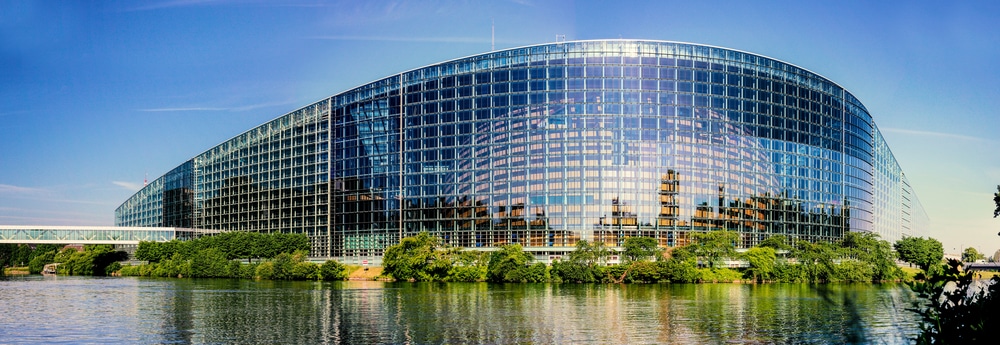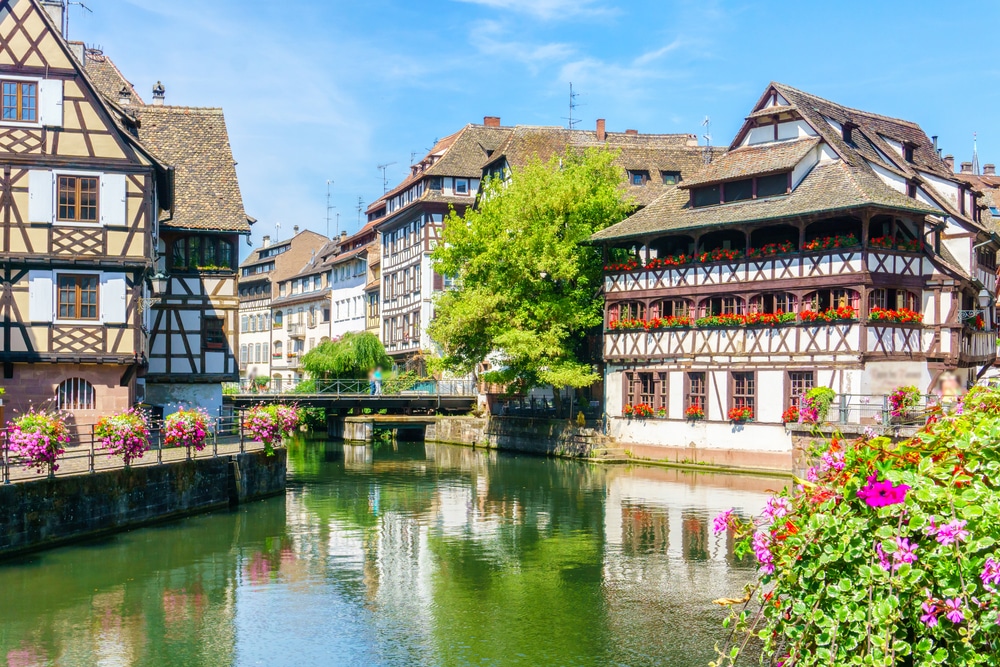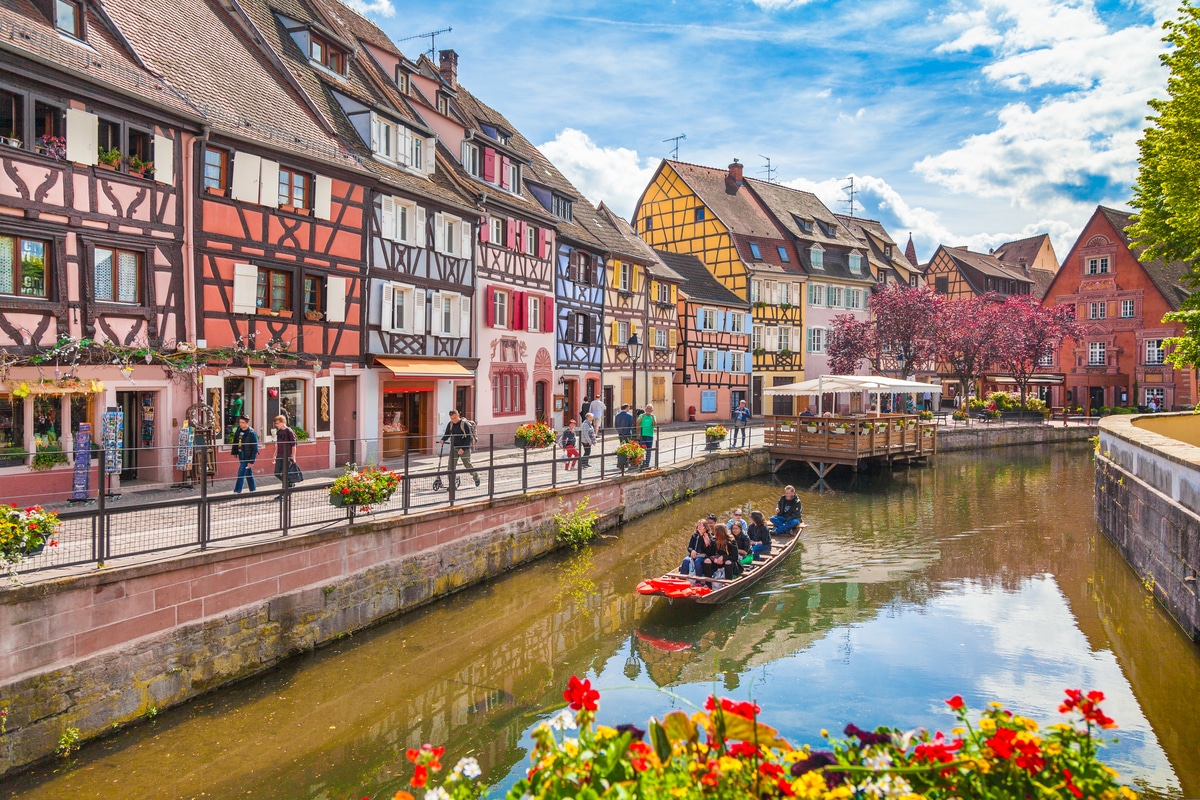- Home ›
- France ›
- Strasbourg
European Parliament
One of Strasbourg's new landmarks is the European Parliament building, completed in 1999. In the glass palace with its imposing glass facade, the members of the European Union meet four days a month.

The largest plenary hall in Europe
The futuristic building was constructed according to the plans of the French architectural firm Architecture Studio on the banks of the Ill River and the Rhine-Marne Canal. The towering building made of glass, metal, sandstone and wood essentially consists of a 60 m high tower with an oval inner courtyard and an attached parliamentary wing, the imposing glass façade extending over 13,000 square metres. The tower houses 1,133 offices on seventeen floors, while the parliamentary wing houses the conference rooms and the wooden plenary chamber with over 800 seats.
The European Parliament
The European Parliament, also known as the European Parliament or EU Parliament, is an administrative location of the European Union. Members of the EU Parliament are directly elected by EU citizens. The institution is therefore the only directly elected supranational organization in the world. The seat of the European Parliament is on Avenue du Président Robert Schuman in Strasbourg, France. Other locations are in neighbouring countries: Brussels and Luxembourg.
The different working locations of the members of the Parliament seem confusing and complicated at first. They go back to the historical development of the European Union. It all began with the founding treaties of the European Communities: These stipulated that the seat of the EU institutions should be determined by an agreement of the foreign ministers of the countries. In 1951, it was the founding of the ECSC, Luxembourg was initially designated as the seat. However, there was soon a great shortage of space, so that MEPs soon switched to a meeting room in Strasbourg.
After the creation of the European Economic Community and Euratom, some staff moved to office buildings in Brussels. In 1958, the European Parliament called for a single administrative building for all the institutions. Brussels, Strasbourg or Milan were on the shortlist at the time. But the politicians of the time could not decide on a location, so for the time being everything remained the same. Subsequently, more and more of Parliament's activities were transferred from Strasbourg to Brussels. Almost 10 years later, the Merger Treaty was concluded and the administrative and meeting places were once again redistributed. Since the conclusion of the Treaty meant that there was no longer any work for the staff of the ECSC institutions in Luxembourg, the Member States decided to transfer the European Parliament's administration to Luxembourg to compensate. The staff's duties were thus once again divided between the three different places of employment.
In the following years, disputes arose between Belgium and France concerning the removal of an office complex in one of the respective countries. In 1992, the EU parliamentarians finally came to a final decision. Strasbourg was awarded the seat of the Parliament. Henceforth, twelve sessions were to be held annually in Strasbourg, while committee and group meetings were to be held in Brussels. This agreement was enshrined in law in 1997 and thus became valid. In 1999, the new plenary chamber was completed and opened in Strasbourg. Today, MEPs and parliamentary staff spend four whole days - from Monday to Thursday - in Strasbourg during the plenary weeks.
The duties of the European Parliament are set out in Article 14 of the EU Treaty. Together with the Council, the Parliament acts as legislator, has decision-making power over the budget and is responsible for political control. It also acts in an advisory capacity and elects the President of the Commission.
Visit
Would you like to take a closer look at the European Parliament? Immerse yourself in the exciting world of the largest supranational parliament in the world and learn more about the working life of parliamentarians. Take a look inside the plenary chamber and take part in an informative talk about the work of the European Parliament. In addition, there are always exciting exhibitions on site - a visit is worthwhile!



